8 Retaining Wall Alternatives That Can Look & Work Better
Author: Rick Worst | Editor: Omar Alonso
Review & Research: Jen Worst & Chris Miller
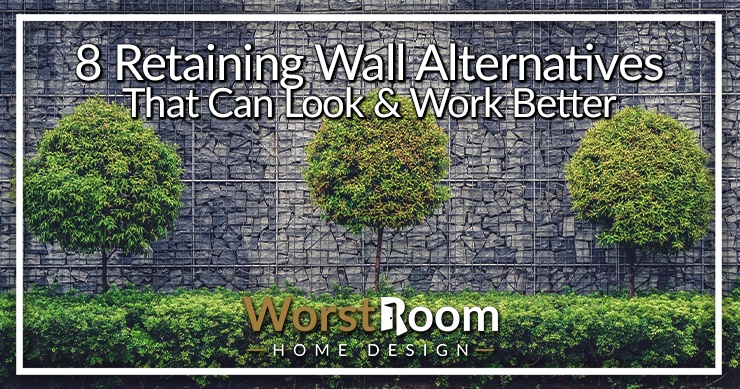
Having your property in a sloping area is stressful and dangerous. However, where there's a problem, there's a solution, including retaining wall alternatives. And when it comes to dealing with an issue like sloping property, the first thing that comes into mind is a retaining wall, but that's not the only option.
It's true having a well-built retaining wall can ensure the safety of your property against a weak gradient of earth. However, maintaining the design flow of your property with the wall could be a challenging task.
So, are there any alternatives to retaining walls? Yes, of course, and we'll share them now. These alternatives can provide you with the same level of protection as retaining walls, keeping together with your property's design flow.
8 Retaining Wall Alternatives
While going for retaining wall alternatives, you need to ensure that the safety and stability are similar or superior. In this section, you'll get to know the 6 most effective and efficient alternatives to the retaining walls.
If done right, it will be sufficient as it was throughout history as recorded by J. Kerisel, where retaining wall alternatives were first used in Newgrange Cairn around 3,200 BC made out of horizontal mats.
Natural Stone Walls
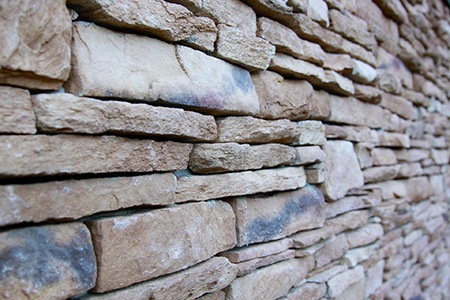
Using natural stone walls as an alternative to retaining walls can be a good choice. You will find natural stone walls in raised bed gardens in most cases.
Also, these types of walls are highly used in landslide-prone riversides and costliness to prevent landslide and serious soil erosion and keep the coast safe from high tides.
Some also become beautiful seats in parks, especially the large, well-shaped ones. To make natural stone walls, you will have to spend around $8.00-$12.00 per square foot.
There are several types of natural walls out there. The most notable are fieldstone walls, Pennsylvania fieldstone walls, colonial wall stones, antique granite, mosaic, veneer, and modular block walls.
Fieldstones are picked from the ground or any field. They tend to be more rounded and well-shaped. Colonial wall stones have been derived from bluestone quarries.
And the majority of the local fieldstone you see are types of granite. Mostly they are used in making steps, cobblestones, and curbing (and of course, as alternatives to retaining walls).
Natural walls can be blended with almost any typical surroundings. It's environment friendly and provides aesthetic looks, as well. They come in different sizes, colors, and shapes. However, constructing a natural wall can be costly and time-consuming compared to the other alternatives.
Reinforced Soil Slopes
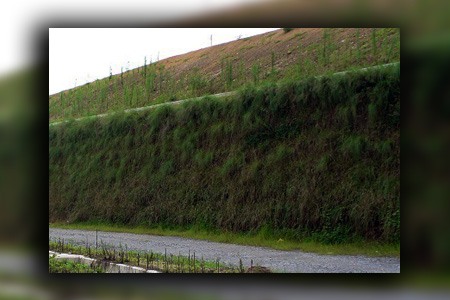
Well, reinforced soil slopes are an effective solution for keeping existing soil in a specific area. These are constructed using geotextiles - for instance, polypropylene or polythene.
As geotextiles are pretty flexible, people go for them when they need something to withstand heavy settlements and earthquake effects. They are usually decorated following a horizontal style between 45 degrees and 76 degrees. Engineers refer to them as RSS or Reinforced Soil Slopes.
When it comes to reinforced soil slope, you have two choices: one is the geosynthetic facing solution, and the other is the steel wire mesh facing. These slopes are usually applied in infrastructures like railways, roadways, and airports.
GRS and RSS slopes are used in dealing with hazardous situations like landslides, rockfalls, or avalanches. Steep slopes are widely used in military drills such as explosion, noise, and assault. So, they are pretty sturdy.
These retaining wall alternatives don't cost as much as some natural stone walls. Reinforced soil slopes don't take much of your space in installation. This wall can be a viable option when making a temporary wall. However, they are not compatible with all kinds of lands.
Wooden Timbers
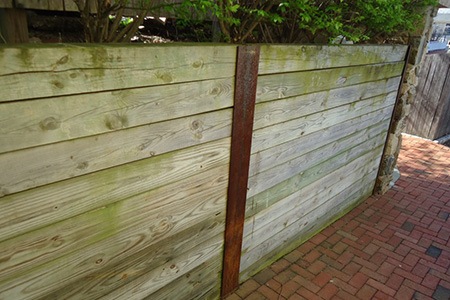
Using wooden timbers could be a great alternative to retaining walls. They are quite popular in building garden beds, raising flowers, and sloppy hillsides. The wooden timbers go pretty well with the natural vibe of the landscape design.
Making wooden timber costs the lives of many trees, So, if you are a pro-environmental activist, people might ask you to consider other alternatives. But wooden timbers are pretty environment-friendly. It's a well-known fact that wood is a carbon-neutral construction material.
This kind of protection is widely used in hilly terrain. The reason behind this is quite simple; raw woods are good at holding up mud. So, they can even deal with minor soil erosion as a retaining wall alternative.
However, wooden timbers may not provide as strong protection as stone walls. If it's not a heavy-construction area, then they would do just fine. Just keep in mind that wooden timbers need replacement when they are expired.
Wooden timber can prevent minor soil erosion, so they are pretty suitable for gardens and small houses by hills. Heck, they were good enough for various types of castles back in the day, and they're good enough now, especially with pressure treated lumber.
Gabion Walls
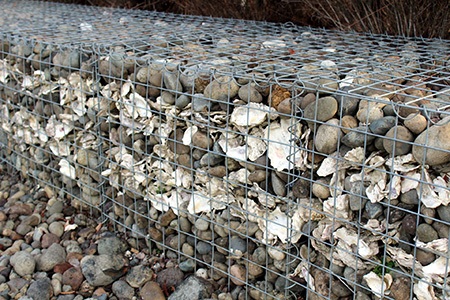
Gabion walls have been used to prevent soil erosion and landslides since the 15th century. The first modern type of gabion solution called the "Corbeille Leonardo" was designed by the famous Italian polymath Leonardo da Vinci in the construction of Marco Castle in Milan.
The pioneer of modern Gabion walls is Maccaferri. These walls were used to stabilize shorelines and prevent soil erosion and landslides. Nowadays, they are also used as noise barriers, making temporary or permanent dams, floodwalls, channel lining, and river training.
Gabion walls are made by putting a lot of small stones inside of a cage. This unique design allows the water to flow within them while supporting the slope.
They are not meant to be stacked vertically like reinforced soil slopes. These wall cages are bonded together and positioned so they remain stable. Gabion walls are among the most intimidating fence ideas, too, and when done right can look very sophisticated.
There are 3-different variations in gabion wall design: bastion, mattress, and trapion. Installing gabion walls is not much of a complicated task. Also, there's not much hassle to maintain these retaining wall alternatives.
The cost of the walls will depend on the quality of wires, as there are different gauges and grades of wires out there. Also, the fill material comes into play. However, it would not cost you more than $4-$40 per square foot.
Soil Bio-Engineered Walls
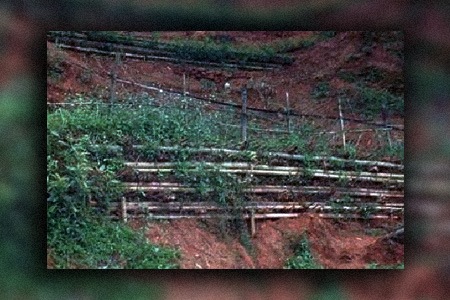
Well, soil bio-engineered walls may not be the most familiar retaining wall alternatives. But they are the most scientifically advanced ones.
When dealing with sloppy areas in coastal bluffs, making steel, rebar, and concrete walls won't be a good idea. The reason is they don't respond effectively to natural flows and ebbs, and that's where soil bio-engineered walls come into play.
To make this type of wall, you will need geo-textiles, cut branches, and rocks. Firstly, cut branches need to be synced with either rocks or geo-textiles. These will provide the soil with immediate support. They are mostly used in protecting sensitive watersheds.
If you manage to do it yourself, it won't cost you a single penny in building them. Biodegradable solutions don't spoil the quality of soils. Instead, it helps to improve their quality.
However, making a bio-engineered wall is not everyone's cup of tea. It's a time-sensitive process and requires basic knowledge about how bio-engineering works. It's not as much an alternative to retaining wall building, so much as reinforcement of the existing land.
Walls of Stick & Stone
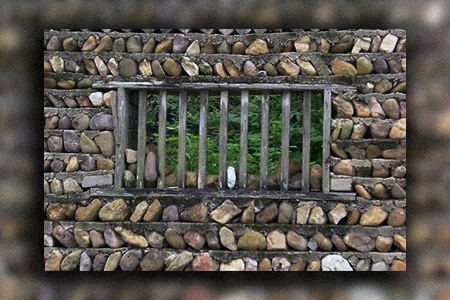
Walls of stick stones are widely used in European areas because of their stylish and aesthetic impression. This type of wall can be built using just sticks and stones.
Water can easily flow within the stick and stones. So, there's no chance of dealing with water blockage or too much pressure on the walls of your backyard. Some people prefer to grow vegetation on their retaining wall, and these kinds of walls are meant for that.
Building retaining walls of sticks and stone is pretty easy; anyone with working limbs can do that. Keeping them strong during the heavy rainfall could be a bit challenging. Though, it's not rocket science.
All you have to do is make sure nothing is blocking the water from passing through the walls. There's not much chance of such an incident still, just in case. Plants and vegetables might start to grow around these retaining wall alternatives naturally.
You need to nurture them regularly. Building this type of wall might cost around $5 to $30 per square foot. You can also consider growing living fences against the bank of soil to act as a retaining structure as well.
Terrace the Yard Into Several Levels
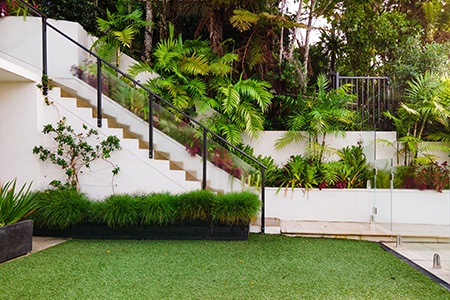
Of course the goal of having a retaining wall is to flatten as much of the land as you can so you can use it, while keeping the rest of the earth held back firmly. But you can relieve a lot of pressure from your walls and use much smaller ones by having two or three terraces across your yard.
For instance, if you want a 6 foot retaining wall and don't necessarily need to have the entire portion of land flat, you could have three separate walls at 2 feet high instead, with three levels of land at differing heights.
This opens up a lot of design options like building natural stone steps, having separated gardens at varying levels (keeps you from dealing with crops that don't work well together), and make drainage a lot simpler. As far as alternatives to retaining walls go, this can mitigate the problem altogether.
Precast Concrete Panels
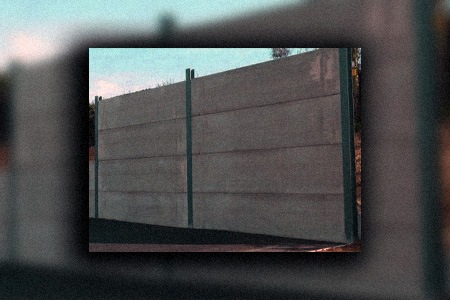
I mention these for the sake of completion, but know that they're not cheaper than building a traditional retaining wall. They'll be a lot more expensive, and more so as the height increases.
But the idea is a company can bring in pre-made concrete panels on a truck and install them with a crane into frames and the entire project can be finished pretty quickly, especially if you've already dealt with the terraforming.
They can last for upwards of 50 years before you start needing to do maintenance. Past that your options for decorating will be painting, so keep that in mind. This is more of a function-over-form choice than a decorative one.
Retaining Wall Alternatives Effective at Holding Back Earth
You need to build the types of retaining walls depending on your area's soil and environmental condition. If you don't have any prior experience building such walls, it would be wise to get experts' help.
For instance, reinforced soil slopes are a better option for earthquake-prone areas. On the other hand, wooden timbers are suitable for hilly areas. We hope you have found what you were looking for.
All the retaining wall alternatives are effective and widely used. Starting from little soil erosion to heavy risk of landslides can be prevented using such walls.



